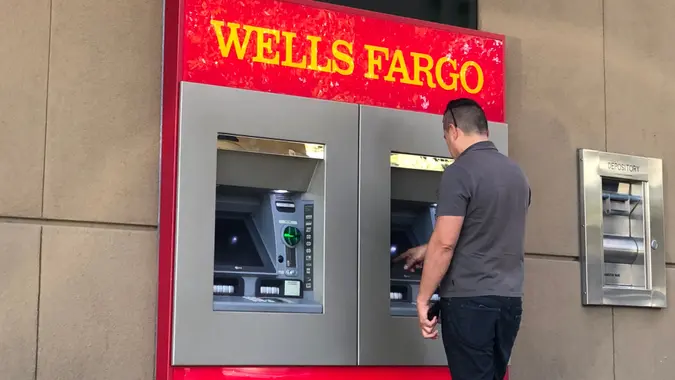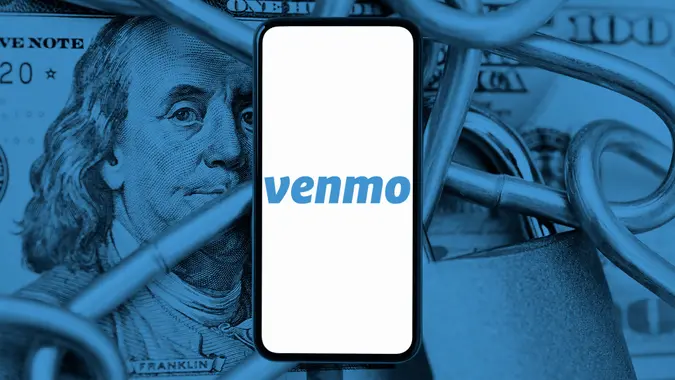What Is Zelle and How Does It Work?

Commitment to Our Readers
GOBankingRates' editorial team is committed to bringing you unbiased reviews and information. We use data-driven methodologies to evaluate financial products and services - our reviews and ratings are not influenced by advertisers. You can read more about our editorial guidelines and our products and services review methodology.

20 Years
Helping You Live Richer

Reviewed
by Experts

Trusted by
Millions of Readers
Protecting your personal information is always paramount when it comes to sending money via a payment platform or money transfer app. Understanding how a platform or app works is the first step to feeling secure with how you are sending and receiving money. Sending money with certain platforms is often a better alternative for transferring money than handling cash, mailing checks or visiting the bank.
Quick Take: What Is Zelle?
Zelle is a peer-to-peer money transfer service that lets you send and receive money. It has made transfers easy for millions of consumers — you don’t have to handle cash, mail checks or visit the bank anymore. Here are some key takeaways about the payment platform:
- It is a peer-to-peer money transfer service that allows users to send and receive money in a matter of minutes through Zelle payments.
- Most credit unions and major banks, including Chase, Bank of America, TD Bank, Wells Fargo and Citi®, are part of the Zelle network.
- You can download the Zelle app to your smartphone or use your mobile banking app and start sending money straight away.
- Even if your bank or credit union is not listed in Zelle’s network, you can still receive payments. Simply download the Zelle app and register with your email address, phone number, and Visa or Mastercard debit card.
- Once registered, you can accept payments, though it may take up to three days to receive the money if you’re using Zelle payments for the first time.
Zelle Pros and Cons
Pros:
- Fast money transfers
- No fees
- Compatible with major banks and credit unions
Cons:
- Once you authorize a transaction and the recipient is already enrolled, you can’t cancel, so make sure to double-check the recipient’s email address or phone number to avoid sending funds to the wrong person.
How Does Zelle Work?
Though you may be used to payment platforms like PayPal, Venmo or Cash App, your Zelle account allows you to transfer money from one checking account to another. Unlike most banking transfers between accounts that require account numbers to initiate transactions, which may take several business days, you can transfer funds in a matter of minutes. The following points outline the basics of how Zelle works.
- Sending money: To send money via Zelle, you need the email address or phone number of the person you’re sending money to. Once you authorize the transfer, the recipient will receive a notification stating that money is waiting for them. If the recipient is already enrolled, the money will go directly to their bank account.
- Receiving money: To receive money with Zelle, your sender will need your email address or phone number. If the sender initiates the transaction and you haven’t enrolled, you’ll receive a notification explaining how to receive the funds.
Sending Limits
If your financial institution doesn’t offer Zelle, your limit for sending money is $500 per week. But if your bank offers Zelle, you can send larger sums of money. Contact your bank or credit union to find out more about specific sending limits through Zelle.
Final Take To GO
While it’s a fast and easy way to send and receive money, Zelle recommends sending money to people you know and trust. Additionally, you should confirm the recipient’s personal information before authorizing a transaction to avoid sending money to the wrong person.
Zelle doesn’t charge any fees to send or receive money, and your financial institution may not charge fees either. Still, it’s a good idea to confirm with your bank or credit union if there are any additional fees.
Zelle FAQ
Here are some answers to frequently asked questions about how Zelle works.- Is Zelle safe?
- No payment method is completely risk-free. Zelle has, however, put in place authentication and monitoring measures to ensure secure transactions.
- What are Zelle's sending limits?
- Your limit for sending money is $500 per week if your bank or credit union does not offer Zelle. However, if your bank is listed in Zelle's network, you can send larger sums of money. Contact your bank or credit union to find out more about its sending limits through Zelle
- Does Zelle charge fees?
- Zelle doesn't charge any fees to send or receive money, and your financial institution may not charge fees either. But it's a good idea to confirm with your bank or credit union if there are any additional fees.
Caitlyn Moorhead contributed to the reporting for this article.
Editorial Note: This content is not provided by any entity covered in this article. Any opinions, analyses, reviews, ratings or recommendations expressed in this article are those of the author alone and have not been reviewed, approved or otherwise endorsed by any entity named in this article.
 Written by
Written by  Edited by
Edited by 
























